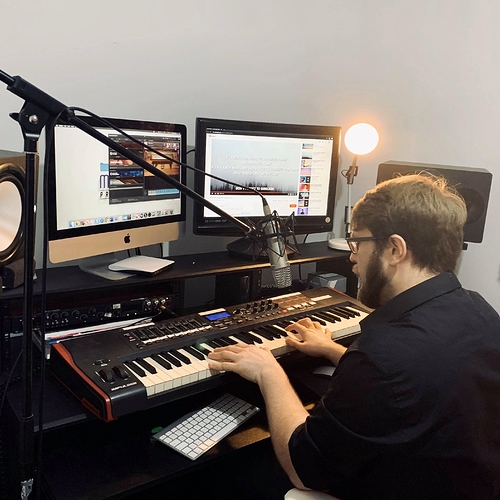Setting up a pro referencing template
Hey folks!
It’s been a while since I posted any tips so here is one that I think you might find very useful.
Often when we approach writing a piece of music we find ourselves stuck on having to mix it anyway that relates with other people. Our ears get tired, kind of making bad decisions. This can make our mixes, or even compositions sound worse than they are. A good way to get around this is his reference tracks, but no one tells you how to reference them properly, or effectively. I am going to tell you how to set up your template in the most efficient way so that you can get the best results out of your peace And you won’t even have to leave your d.a.w.
The Template
Okay, the first thing you will need to do is set up all the instruments that you typically use in your compositions. Now buss the different sections together. To do this send the output of each of the tracks to your bus and name that bus after the choir you have been consolidating. E.g - strings, woodwinds, brass, percussion etc.
Now take the outputs of all of those busses and send them to a new bus. We will call this bus “SUBMIX1”. This is where you will add your mastering chain for your composition, keeping the stereo output and master free from plugins.
Now create a new Audio track and name it “reference”. Check that the output of this track is going to the stereo out. If it’s already going to the stereo out then you don’t need to do anything.
You can see that you can edit and listen to your piece without affecting your reference tracks, as you now have 2 different streams of audio that you can affect separately. This way your reference won’t be affected by your mastering chain which gives you the best representation of the piece. So that you can reference effectively.
On your stereo out add a loudness meter. Check the loudness of your track in comparison to the reference. Now match the volume of your reference to your track by with pulling the fader down until the LUFS (overall loudness) matches your composition.
Make sure your reference stars a little bit after your track finishes so you can just jump the play head to where you want to listen to without having to mute and solo.
Now you have a template you can use over and over again to compose and reference on the go. Just pull in your new references whenever you want a fresh piece to reference.
A few tips on referencing.
- make similar mixing choices to your reference track. Listen to the lows and the highs to see how they have been mixed.
- if you’ve mixed your levels and suddenly you now can’t hear the drums, don’t turn them up. Carve out space for them. They are likely being masked by other low instruments. Check for instruments playing in the sub area on your EQ graph.
- mix to be cohesive rather than to hear every single instrument. If there’s an instrument doubling something just to reinforce the part then tuck it just underneath the main instrument and if it’s got a harsher top end your noticing just EQ it down until it’s not an issue. Think about how the orchestra sounds when you write. You don’t hear all the instruments but if you were to remove one of those instruments then you’d notice it wasn’t there. This is something to keep in mind.
- if you are going for a classical piece the. Keep it dynamic. You don’t need to compress much, or sometimes at all on the way out. If your going for epic music the. Aim for between -13 and - 9 LUFS in mastering, or turn up your reference tracks at the end of mixing and check the actual level and match that.
This is something you’ll get better at over time. But I really hope this helps you as much as it’s helped me over the years!

